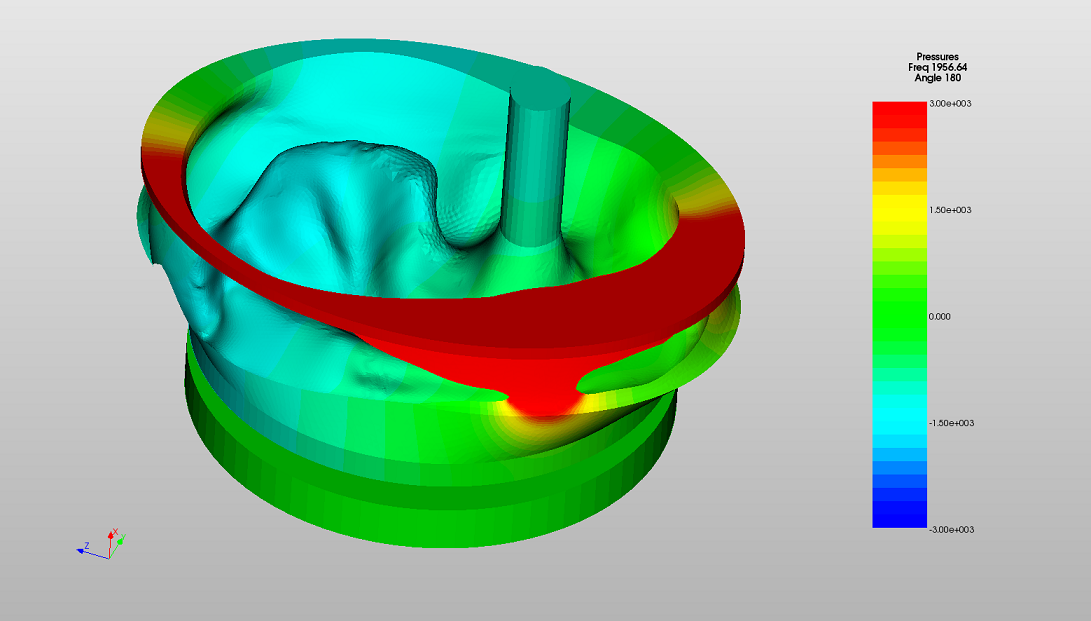Effect of Adding an Ear
Video showing development of CAD to include human ear.
The following scenarios attempt to bring together some of the previously investigated reality factors. Frame vent damping is now applied throughout these simulations.
The graph below hows the comparison between the empty front volume and with the ear added as a solid entity and the mic point situated at eardrum.
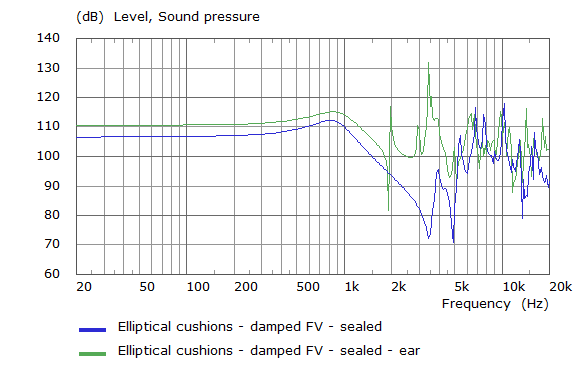
The low frequency SPL is generally increased by the introduction of the ear, effectively displacing the air and reducing the volume. A clear increase in efficiency can also be observed in a broad band of frequencies centred at ~3.4kHz. The acoustic phase contours indicate that the ear canal resonance is the cause of this rise as expected.
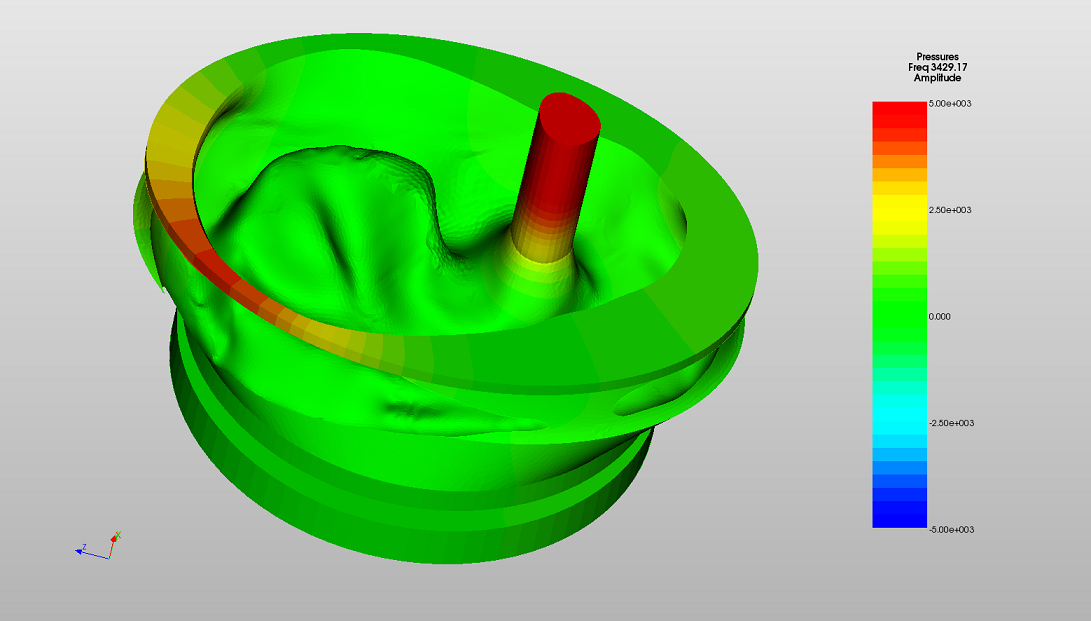
Modelling the additional effect of a leaky front volume that surrounds the imposed ear by applying surface absorbency to the region that surrounds the ear (in beige).
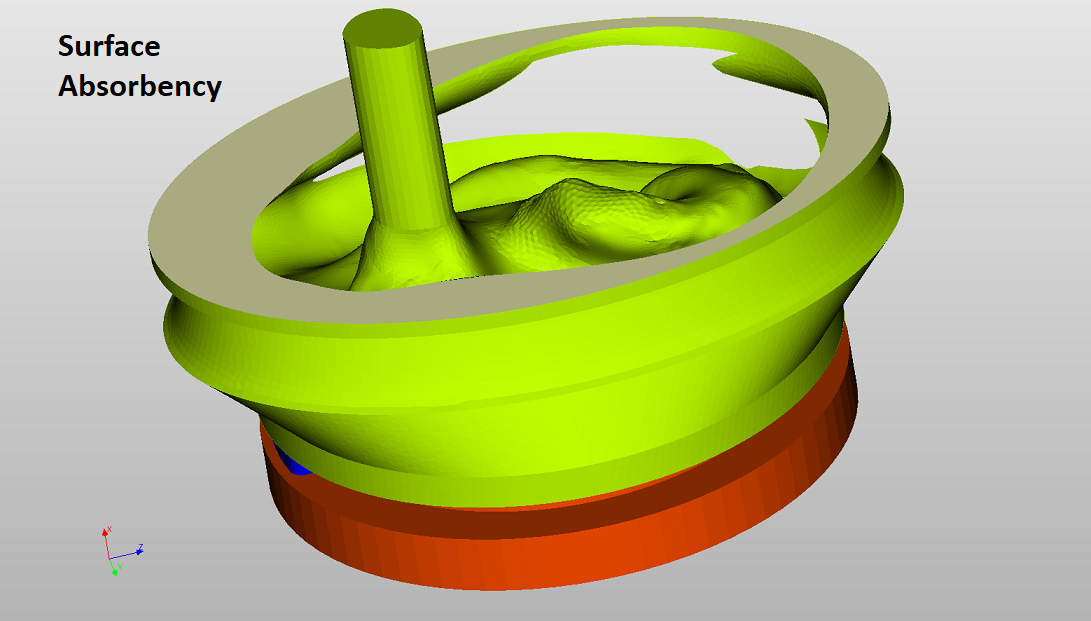
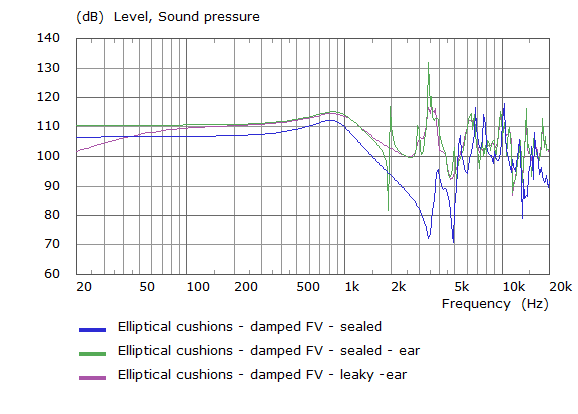
The effect of introducing this leak is, as observed in the earlier system analysis to create a roll off in the low frequency response. Additionally, it is interesting to see that the peak in the response at the ear canal resonance is also diminished and the disappearance of a sharp resonance effect at 2kHz which, as the acoustic phase contours below illustrate is a resonance set up in the cavity of air surrounding the ear. The leak effectively eliminates this resonance and it is unlikely that it will be observed experimentally.
